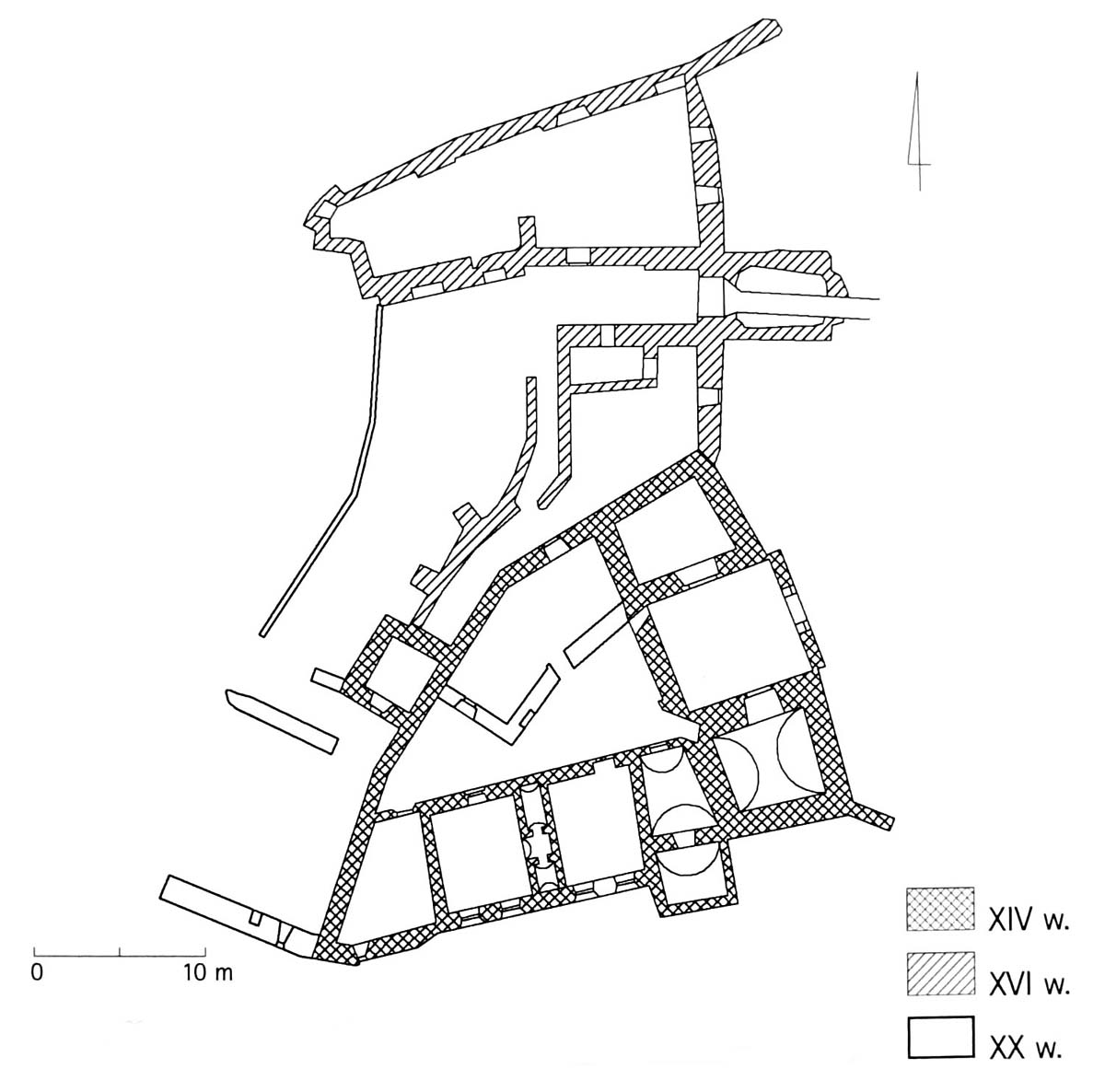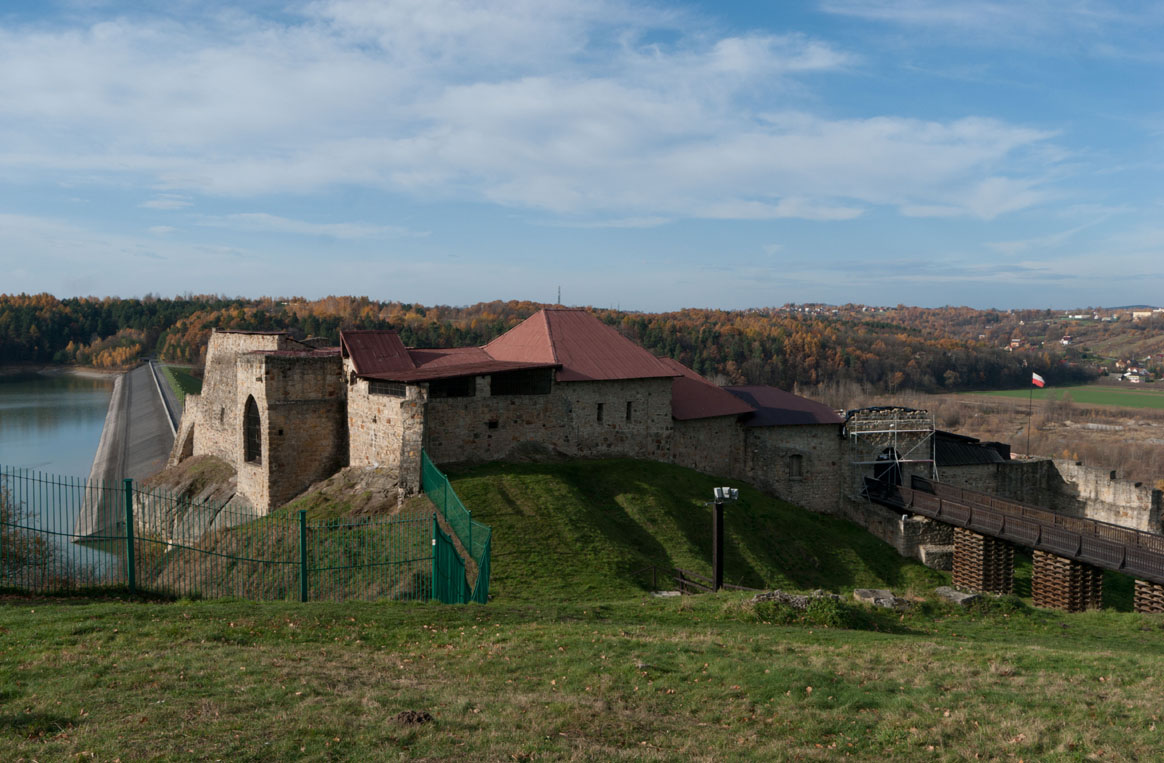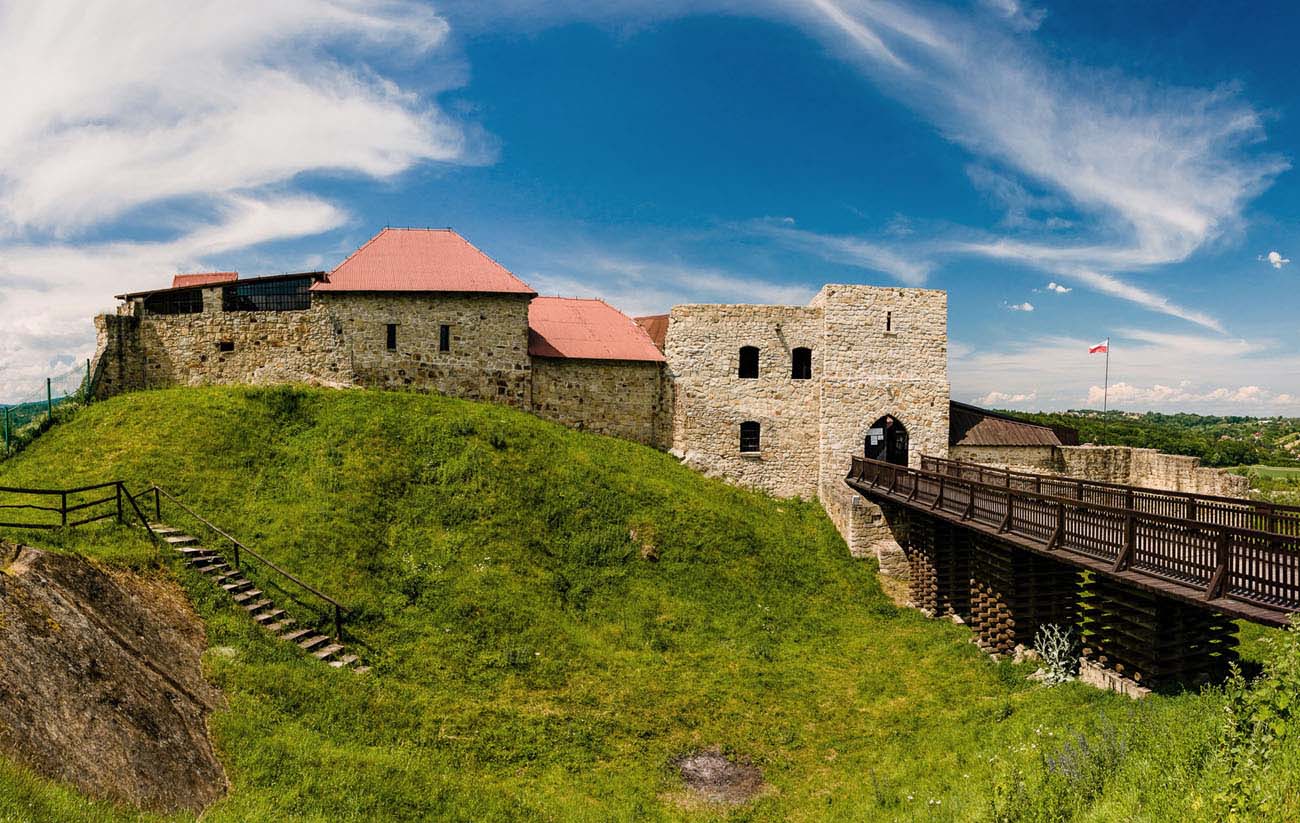History
The castle in Dobczyce was mentioned for the first time in 1362, although it can be assumed that some fortifications have existed here since the 13th century. In 1390, king Władysław Jagiełło commissioned its conservation to the royal tenant Klemens from Moskorzewo, allocating large sums from the Wieliczka salt mines for this purpose. In later centuries, the castle was under the pledge of numerous families, including Lanckorońscy, Czerny, Lubomirscy and Jordan. Subsequent starosts modernized and expanded the medieval site, especially the Lubomirscy family, contributed to the transformation of the castle into a comfortable residence. It survived the “Swedish Deluge” but was ravaged by the Swedish army in 1702. These destruction started the fall period in which the materials obtained from the stronghold were used to build nearby houses and the church.
Architecture
The original castle was built on a hill on three sides surrounded by steep cliffs. The hill has the shape of an irregular quadrilateral measuring 52x48x55x26 meters. The upper castle was built on a triangular plan with two one-dimensional wings adjacent to the perimeter wall. In the southern corner, most likely, there was a tower on a plan similar to a square. Lower fragments of a cylindrical tower with a diameter of 9 meters were also found, probably the oldest element of the castle. From the north there was a lower ward. The entrance was located in its northern part and according to the inspection from 1620, an oak bridge on the pillars led to it. From the side of the courtyard, the gate passed into a brick corridor 3,55 meters wide and 10 meters long. The original entrance to the upper ward was located in the southern part of the castle.
Current state
To this day, the walls of the ground floor, the tower and the chapel have been preserved, not much talking about the original appearance of the castle. Due to the construction of the dam on the river and the accumulation of water level, the view of the nearest surroundings of the castle has also been transformed. A small regional museum is open in the ruins, open from 1.04 to 30.10.
bibliography:
Krasnowolski B., Leksykon zabytków architektury Małopolski, Warszawa 2013.
Leksykon zamków w Polsce, red. L.Kajzer, Warszawa 2003.





